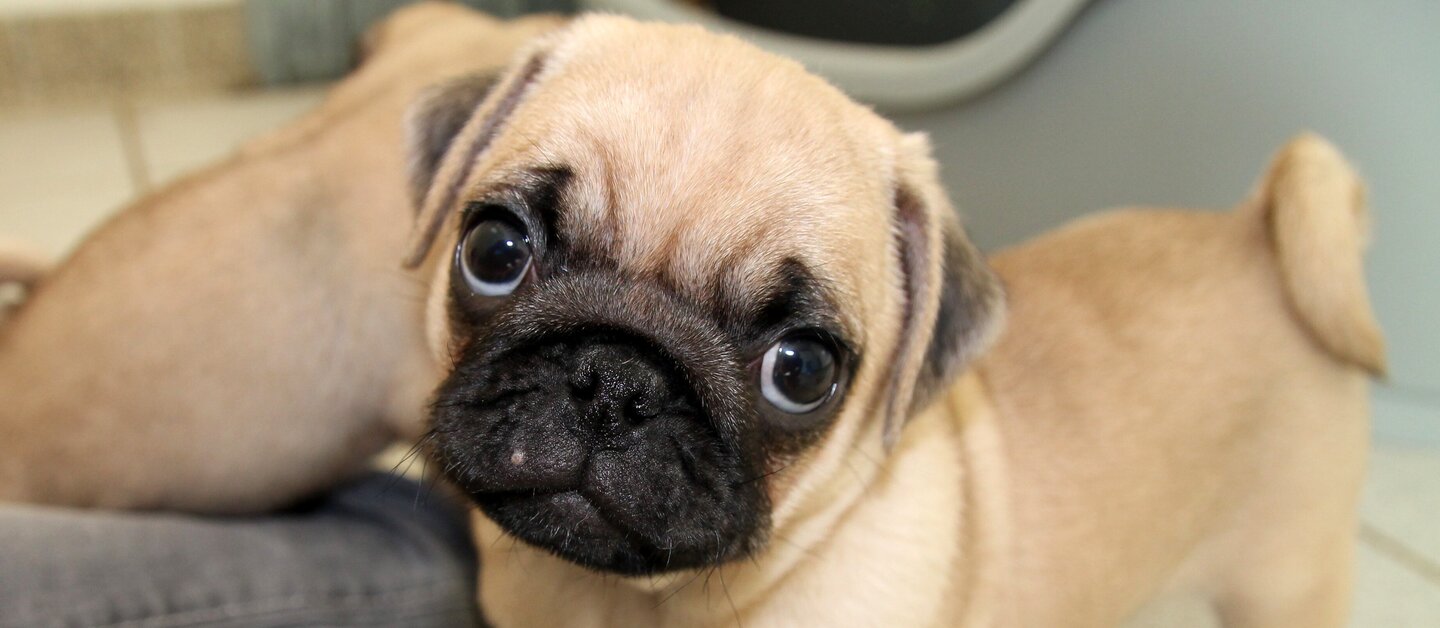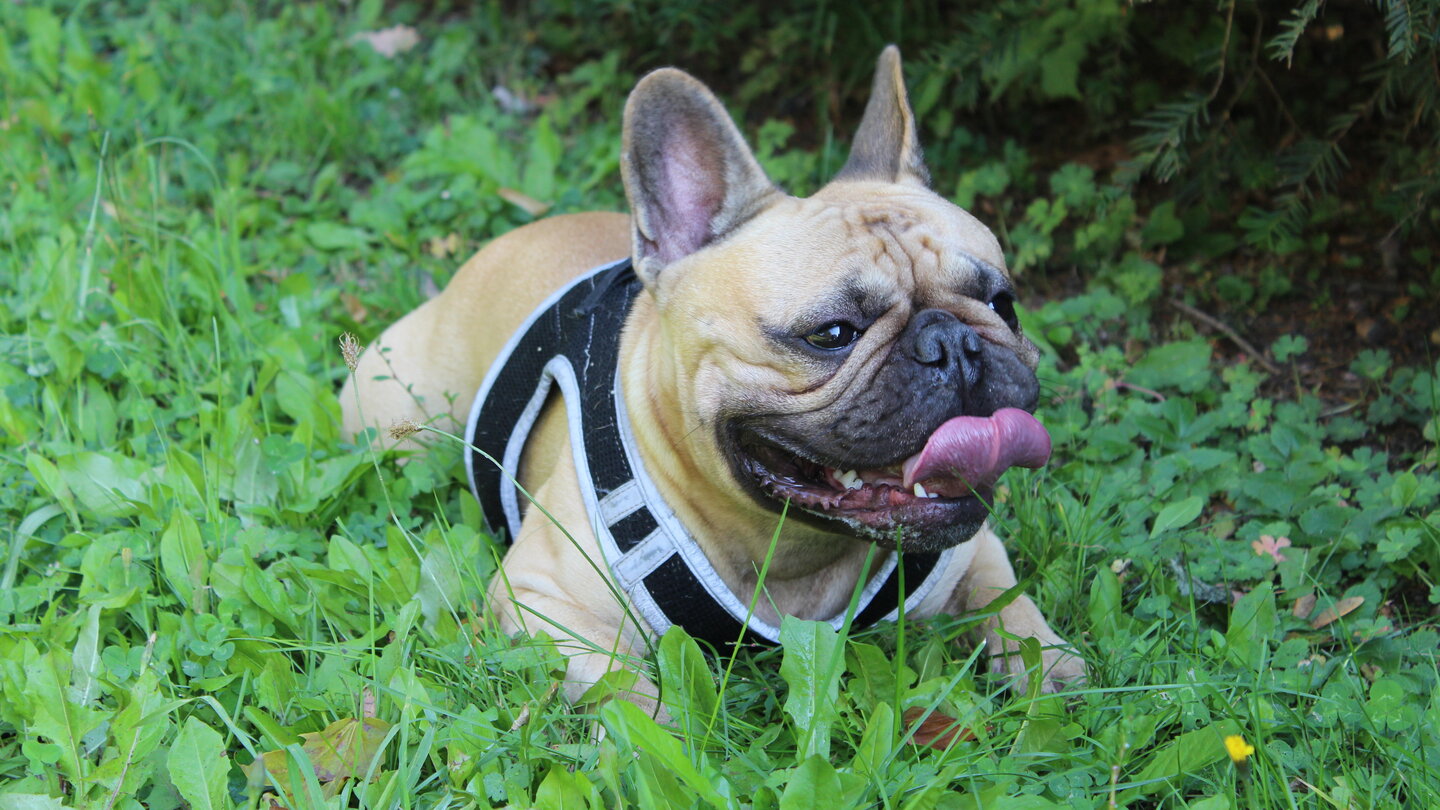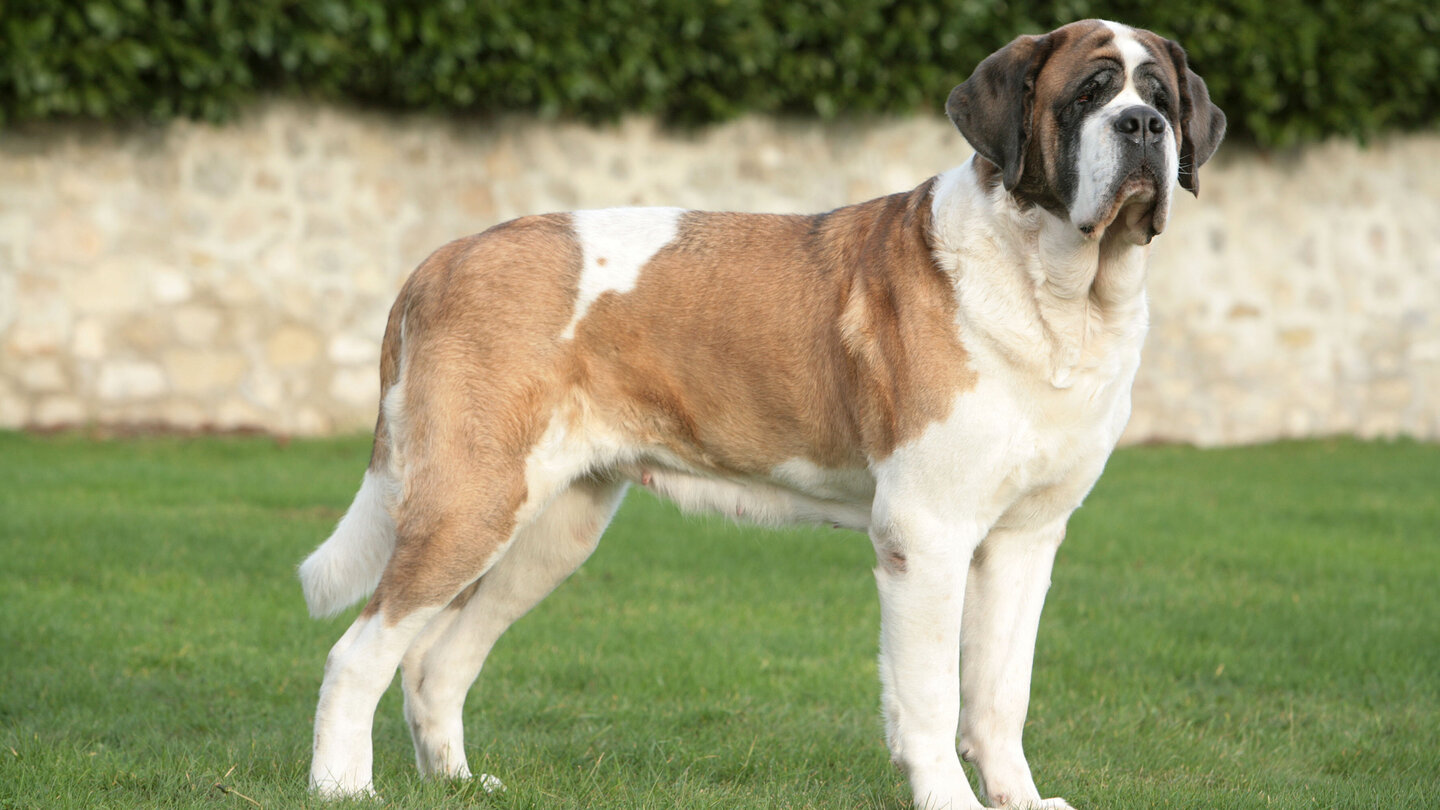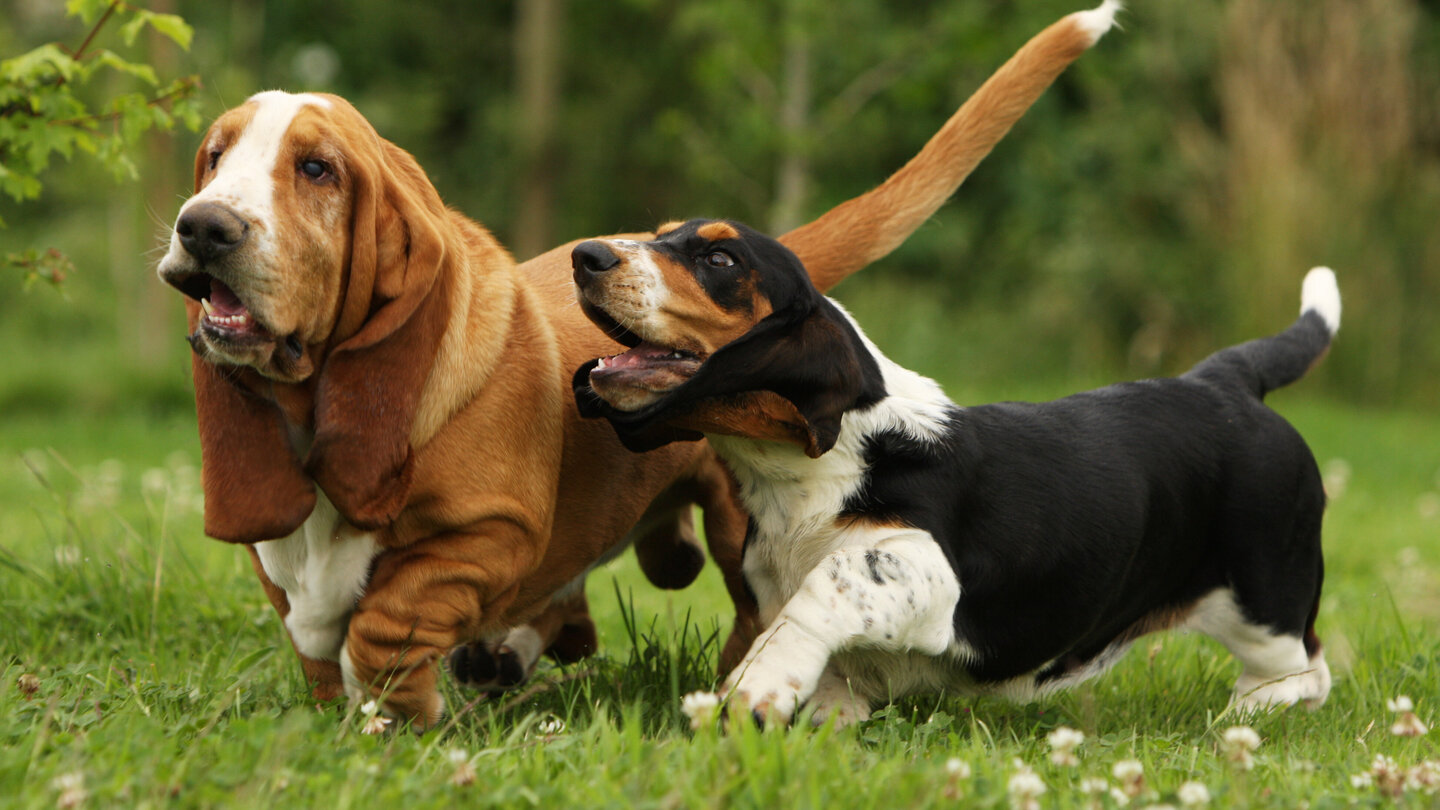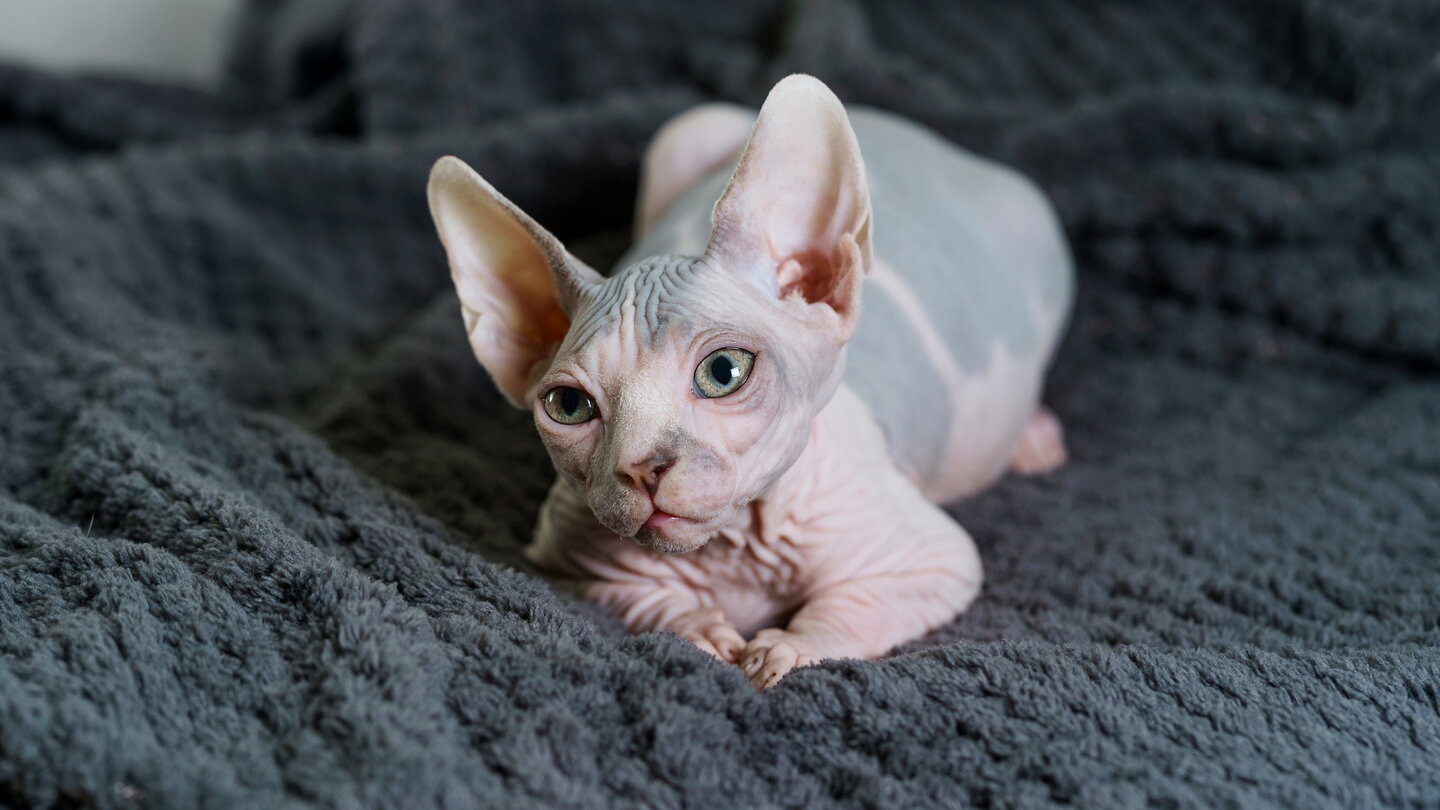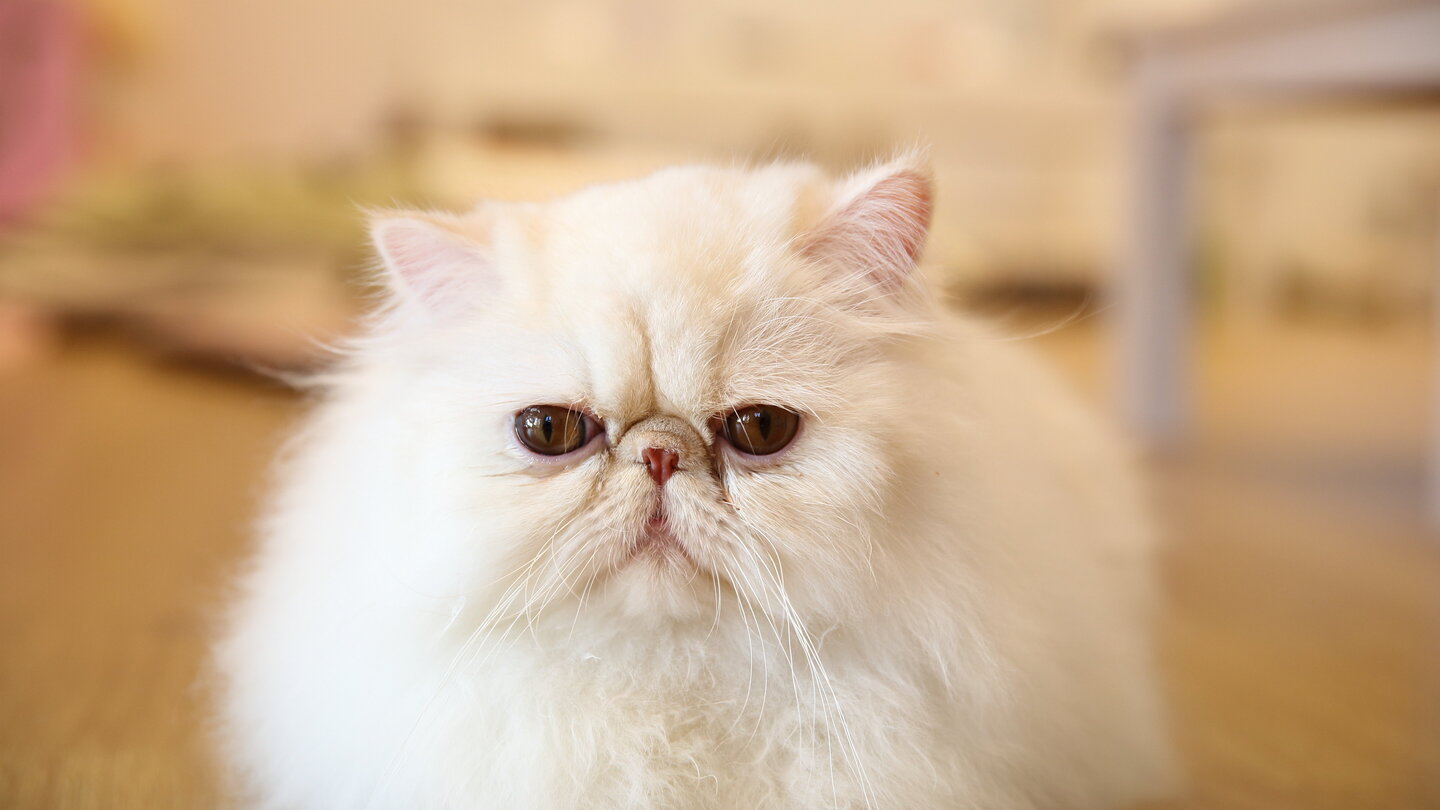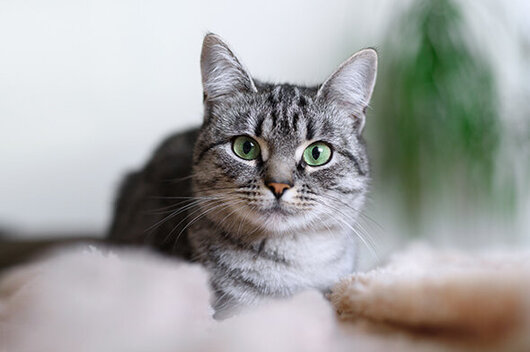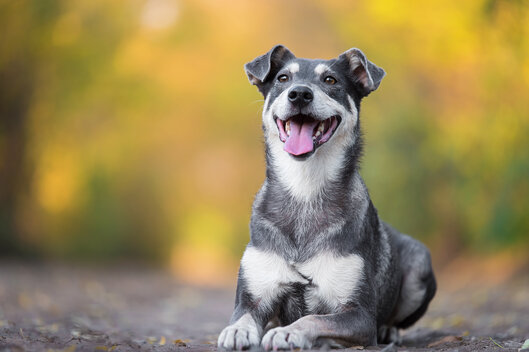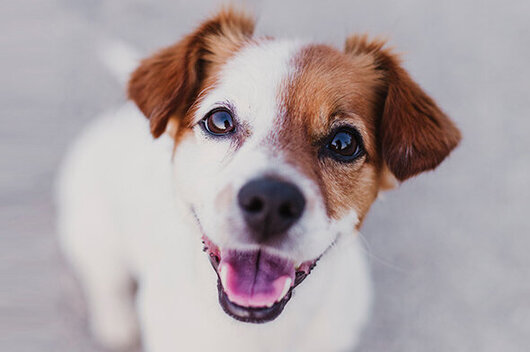French bulldogs, naked cats and co.Torture breeding means lifelong suffering for animals
Whether Pug, French bulldog or Scottish fold: many popular pet breeds are extreme breeds. The animals have to endure a torturous life, because years of breeding for certain characteristics make them hard to breathe, deaf or generally more susceptible to disease. People cause this suffering by "designing" dogs, cats and other pets according to their visual desires.
What many owners find cute is torture for the animals: people put up with animal suffering in order to achieve visual characteristics such as googly eyes, a certain coat pattern or a flat snout in dogs, cats and other pets. As many people like the appearance of extremebreeds, breeders can continue to reproduce such animals. Society is largely unaware of the suffering this causes. Social media trends and celebrities with such "trendy" pets further increase the demand for torture breeding.
What does torture breeding mean?
By torture breeding, we mean that animals lead a life of pain and harm due to their bred characteristics. People prioritize their preferences and breed dogs, cats and other animals until they meet their expectations. Individual characteristics are bred out, while others are emphasized. In this way, breeders influence the health, behavior and natural adaptability of the animals. Over the years, breeding and breed standards have developed more and more towards extreme forms. The victims are the animals.
Short-headed dogs have difficulty breathing
Dark, large saucer eyes, extremely flat muzzle, round head and short legs: Dogs such as the pug or French and English bulldogs are considered fashionable breeds and delight people with their childlike appearance. However, these dogs pay for their supposedly cute appearance with their health. Short-headed dogs often struggle with skin, ear and eye problems as well as misaligned jaws and teeth. The majority suffer from shortness of breath. This can become dangerous when running, at high temperatures and during exertion, which is comparatively easy for other dogs. As dogs cannot sweat and release heat through their skin, they regulate their body temperature by panting. Due to their constricted nostrils, short-headed dogs also have to breathe more heavily. As a result, they do not tolerate heat well, sniff, snore, have trouble sleeping and are quickly out of breath. Especially in summer, it is not uncommon for these dog breeds to collapse and die. Due to their compact build, they also have spinal misalignments that often lead to herniated discs.
Dog breeds with eye problems
Dog breeds such as St. Bernards, Cocker Spaniels and Basset Hounds suffer from eye problems, as they are particularly prone to outward rolling of the lower eyelid margin. The animals cannot close their eyelids properly and therefore suffer from lacrimation, conjunctivitis and, as a result, corneal changes.
Scottish Folds have massive bone damage
Cats like the Scottish Fold have been bred to have ears that fold forward. Behind the folded ears is a serious hereditary disease that alters the bone and cartilage tissue - and not just in the ears. This genetic defect damages bones and cartilage throughout the body, especially in the lower extremities, and causes massive permanent pain and suffering. As a result, affected animals are often reluctant to move, jump or play and often have to be put out of their misery at a young age by a vet. The ears are extremely important for cats to communicate with their conspecifics and express their moods. Scottish Folds are therefore unable to communicate properly with other cats.
Bengal and co: Hybrid cats are not pets
More and more Bengal and Savannah cats are moving into our households. Breeding these so-called hybrid cats is highly problematic: male wild cats are forcibly mated with female domestic cats. This means pain and stress for the female cat. She is often injured due to the difference in size and the bite on her neck. Their offspring can be three to four times larger than normal kittens. In the first generation, there are almost always emergency caesarean sections and stillbirths. This can be life-threatening for the mother. As males are sterile until the third generation, wild males are often used for mating in later generations. When a hybrid cat moves into a new home, it is a challenge for many owners. Most people underestimate the wild animal characteristics of these cats: They have a strong hunting instinct, are nocturnal and crepuscular and can still exhibit this behavior in later generations. Due to the unclear nature of their wild animal characteristics, it is difficult to keep these cats in an animal-friendly and species-appropriate manner. This can lead to behavioral problems.1
Hairless cats and dogs are severely restricted
Hairless cats like the Sphynx have neither fur nor tactile hair. The hairlessness is due to a genetic defect caused by breeding and causes great suffering. This is because the animals cannot protect themselves from the sun, cold or wet. This also applies to hairless dogs. The lack of tactile hair is equivalent to the loss of a sense - the cats can hardly orient themselves. In addition, hair has a protective function for the eyes and face, which hairless cats lack. Without fur and tactile hair, cats find it difficult to communicate with other cats and animals. Sebum, which is secreted through the skin and normally absorbed by the hair, accumulates and leads to discomfort and inflammation.
White cats are often deaf
White cats are often hard of hearing or deaf - various breeds are affected, for example Persian, Turkish Angora and Russian White. The hearing problems are mainly related to breeding for the W gene, which produces the white coat color. Cats with white coats are also more prone to skin tumors. Many of these animals have blue or different colored eyes and also suffer from retinal changes, eye tremors or squinting.
Cruelty-free breeding of small pets
In addition to dogs and cats, there is also torturous breeding among other animal species. These include, for example, Angora rabbits due to their unnaturally long hair or ram rabbits, which suffer from painful ear infections due to their drooping ears. Guinea pigs are also affected. The particular coloration or structure of the coat of grey, Dalmatian, Rex and satin guinea pigs is associated with pathological changes such as deformities. Long-haired guinea pigs lead a difficult life as they can no longer groom their fur themselves. Hairless guinea pigs have an extremely weak immune system and without fur and tactile hair their lives are enormously restricted.
Fish and reptiles also affected by torture breeding
The crested budgerigars are one of the birds affected by torture breeding. Almost half of their offspring have massive health problems. Many die because fluid builds up in their brains, which can cause cerebral hemorrhages. Parakeets that are viable often have balance problems. Among fish, eggfish, i.e. goldfish without dorsal fins, Berlin guppies, whose fins grow throughout their lives, and goldfish that can only look upwards, known as sky-gazers, are among the worst breeds. They are restricted in their ability to swim or have a significantly poorer ability to orient themselves due to their altered field of vision. Absurd breeds can also be found in terrariums. Morphs are reptiles that differ in color, pattern or skin structure from the original wild type. Popular specimens are those that lack individual color pigments. The exotic appearance favors tumors and makes the skin sensitive to vital UV rays.
Legal situation in Germany too vague
The Animal Welfare Act is not yet clear enough when it comes to torture breeding. According to the Animal Welfare Act, such breeding is actually prohibited if the animals are missing body parts or organs for hereditary reasons or if they are unfit or deformed, resulting in pain, suffering or damage. However, due to this vague definition, authorities have difficulties in legally prosecuting torture breeding. But progress is being made: The current draft for a new Animal Welfare Act provides for an extension and specification of the "torture breeding paragraph".
This is what the German Animal Welfare Association demands
The animals affected by torture breeding suffer from their diseases. That is why the German Animal Welfare Association is calling for
- A legally binding regulation that clearly defines what is considered torture breeding. With our draft for a torture breeding ordinance, we show what this should look like.
- A ban on the breeding, keeping, import and sale of torturous breeding.
- Tougher enforcement by the inspection authorities.
Qualzucht Evidenz Netzwerk QUEN
The Qualzucht Evidenz Netzwerk QUEN provides an overview of breeding-related visible or hidden defects in affected animal breeds. The information database is a collaboration between various animal welfare organizations, official veterinarians and specialist veterinarians to develop a database on the characteristics of torture breeding in order to better implement the existing ban on torture breeding (§11b Animal Welfare Act). The information sheets, court rulings etc. are available to everyone and can be used freely. Contact can also be made directly if help is needed in a specific case.

